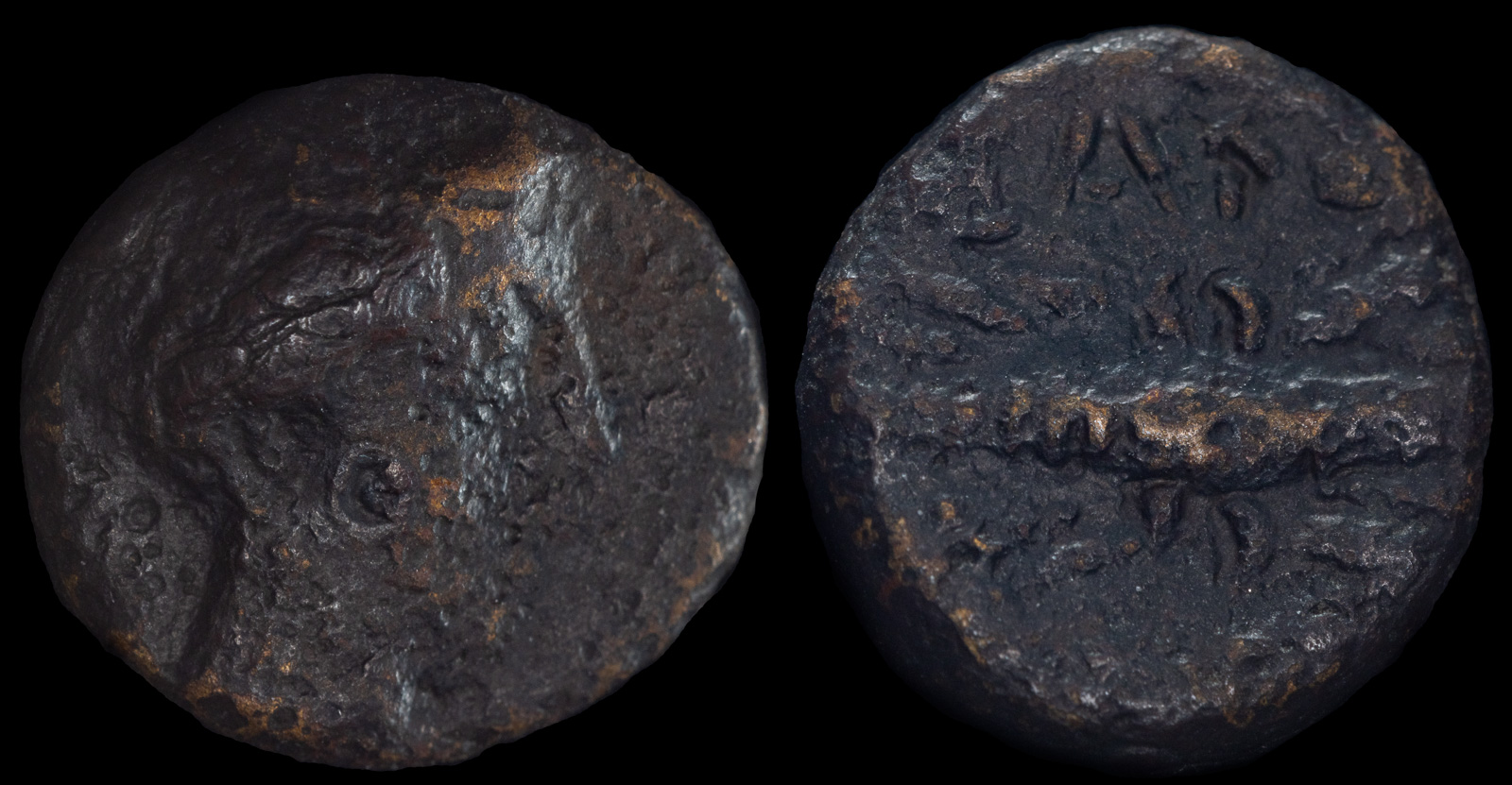
Zypern Cyprus Paphos Bronze
360-312 BCE probably Timarchos
16.00 mm 3.92 g
vgl. BMC 48
Gekr. Kopf d. Aphrodite n.l. Rs: Taube n.
Ex Sebastian Sänn
In the game of Hellenistic Jeopardy, everyone avoided the topic “Kingdoms of Cyprus” like a plague. Despite being only three-and-a-half times larger than Luxembourg, it was home to no fewer than ten kingdoms during the time of Alexander the Great.
Each of these had their own dynasties, though precisely who ruled when is up for considerable debate. Such is the case with Paphos.
We think Timarchos came into power around 350 BCE. His father was Timocharis, who ruled from sometime until around 350 BCE. Timarchos’ son was Nikokles, about whom we know a lot more. Timarchos died sometime between 325 BCE and 321 BCE.
That’s all we know. We unfortunately have no clue whether he preferred rugby union or rugby league, considered a chihuahua an actual dog, or what his favorite Avengers movie was.
It is presumed that Timarchos was in power at Paphos when Alexander received help from Cyprus during the Siege of Tyre. He is not, however, mentioned as one of the three kings who took part personally, which included Pnytagoras of Salamis, Pasikrates of Soloi, and Androkles of Amathos.
Since there’s not much more to say about the man, we turn our attention to the dove on the coin. This dove has a history, which in the typical Greek weirdness involves a lot of loose women and the world’s first “pleasure statue.”
It starts with a guy named Pygmalion. He lived in what would become Paphos, and, like most Republican voters today, hated women. He considered them immoral and refused to marry one. Now back then in many parts of Greece, men were a viable option, but he wasn’t into that either.

Cyprus, Marion. King Timocharis
350-332 BCE
Æ 13.15mm 2.26g
Obverse: Head of Aphrodite right
Reverse: Thunderbolt
BMC Plate XX coin 18
Luckily for Pygmalion, he was a very good sculptor. So, he created a masterpiece representation of Aphrodite, and immediately fell in love with it.
Since this is a PG page, we won’t go into details on what happened here, but to fast-forward a bit, Aphrodite herself was very flattered at his attention and to reward him, as well as to prevent further bodily pain, she turned the statue to life.
The two married and had a son named Paphos, who founded the city.
So, what does this have to do with a dove? Doves are symbols of peace and love, which are Aphrodite’s thing. Were the coin in better condition, it would be clear that the other side contains Aphrodite herself.